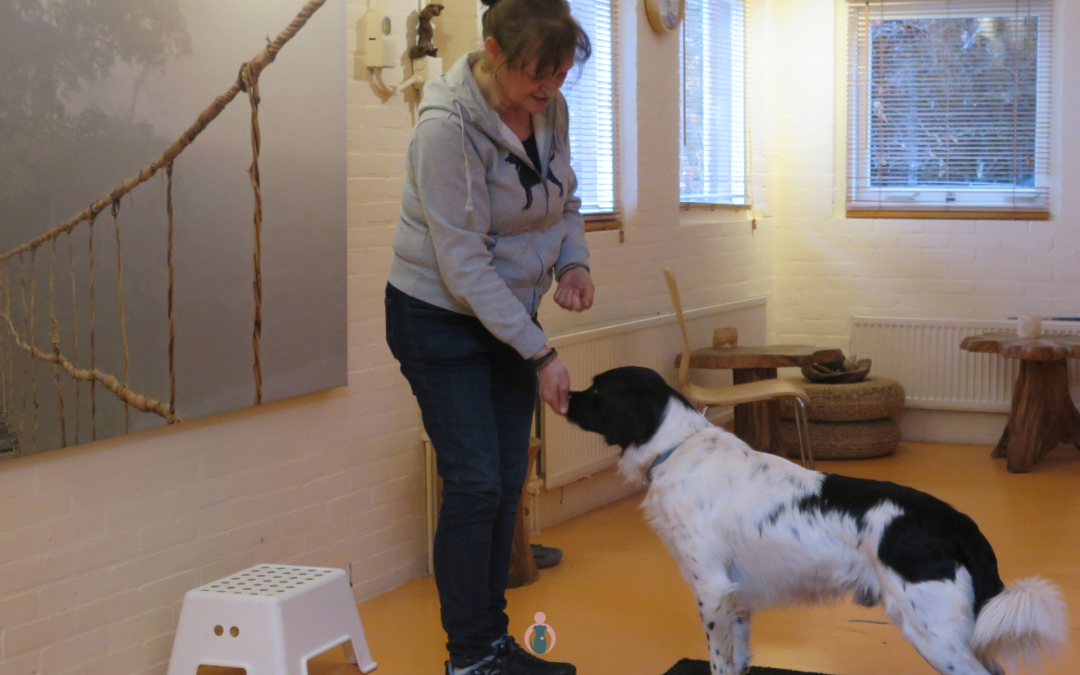Proprioception refers to the ability to sense and understand the body’s position in space, as well as the movement of limbs and joints. It’s like having an internal GPS system that helps us navigate the world around us without having to constantly rely on our eyes.The word comes from the Latin “proprius” which means “self, and perception, which we could translate as “being aware of”. So together it means “being aware of oneself”. For example, as I write this blog, I know the position of my legs under my desk without looking: my ankles are crossed, the right in front of the left.
We have specialized receptors in our skin, muscles, tendons, and joints, among other things, that send signals to the brain. Signals that provide information about our body’s position, tension, and movement.
Dogs have these same receptors and rely on the information these receptors send in their daily lives. This allows them to move effortlessly through their environment, maintain balance, and coordinate their actions. Whether jumping over hurdles, climbing stairs, or catching a ball in midair, proprioception plays a fundamental role. It enables them to maneuver well in various terrains, even in low-light environments with minimal visual cues. Proprioception allows them to adjust their movements and adapt to different surfaces.
Not only do we need to be aware of how and where our bodies are in space, but we also need to be able to respond to changes in that space. So not only does a signal have to go from the receptors up to the brain, but a signal has to come back that activates the right muscles to navigate the environment. Signals that cause you to go around a tree instead of against it, to brake in time, etc. All of this can be strengthened through training.
Exercises that stimulate the proprioceptive abilities of a dog can, therefore have a wide range of positive effects. By improving balance and coordination, injuries and falls can often be prevented. Older dogs or dogs with physical disabilities can benefit greatly. In addition, the improved body and spatial awareness created by proprioceptive training can contribute to increased self-confidence and overall mobility. And it goes without saying that dogs that are active in sports will benefit from proprioception training.
Dogs often make it seem so easy, especially when young. But even then, we can be proactive and help reduce the risk of injury by working to improve balance and coordination.


 Want to receive 5 tips for your senior dog in advance?
Want to receive 5 tips for your senior dog in advance?